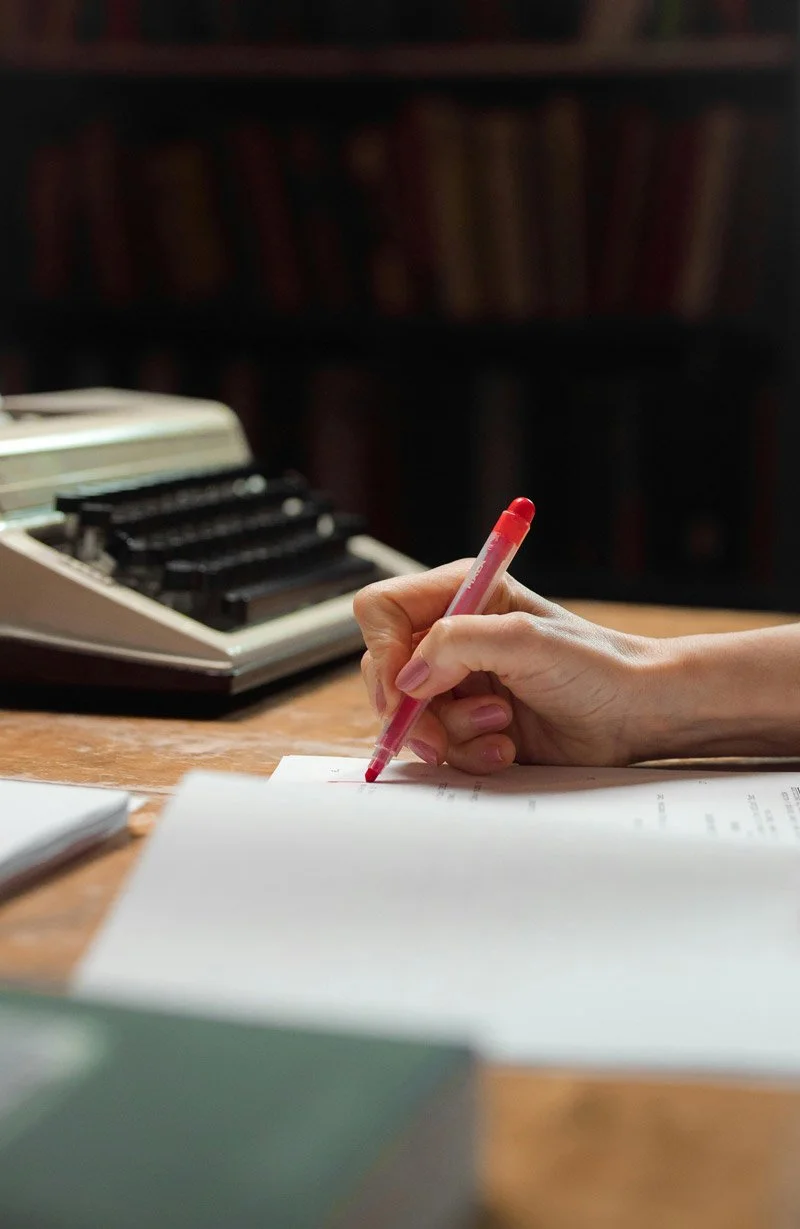Editing that brings structure, flow and clarity to your writing.
Editing is part of the process that a manuscript goes through on its journey to publication. What a manuscript needs can vary widely, from a big-picture approach to structure and organisation, to focusing on the little details like conforming to style and spelling conventions. Ultimately, editing is there to ensure your work conforms to the 5 Cs:
Correctness
Consistency
Clarity
Completeness
Convention
I like to think that it also ensures accessibility, inclusion and thoughtfulness.
My editing services
Line editing
Your text isn’t quite ready to be released into the wild. You need more complex work to prepare it for publication. Perhaps you want to submit a sample to a publisher, or you’re seeking some advice about style and structure.
-
I will do a thorough line-by-line review of the text, remaining sensitive to your voice, and analysing at sentence level whether:
the language and tone are appropriate for the intended audience
the narrative flows, and is logical
any information is missing or unclear
the style and content is consistent
sentences are necessary and in the right place
word choice and syntax are effective
the text is readable and understandable
a citation or reference is required (academic works)
information is accurate or, conversely, misleading
This list is not exhaustive, and line editing can also include more detailed copyediting work, such as formatting references and citations, fact checking and styling. It can also look at structure, although not on the scale of developmental editing.
During this stage of the editorial process, my job is to advise you, make suggestions for substantial changes and explain why these changes would help you.
Developmental editing
You have finally finished writing your manuscript, but you’re not sure whether everything is in the right place to really make your work shine. A developmental edit will look at the big picture, making sure that the structure and organisation is logical and all the elements work together to help you get your message to the reader in the best possible way.
-
A developmental editor will consider:
the author’s desired outcome
the overall structure of the book, from introduction to index
chapter or section structure
narrative flow, and natural progression of information
efficient and logical presentation of ideas
unnecessary or repeated information
missing or unclear information
Copyediting
Your text has jumped through hoops, and it’s almost ready to fly the nest. You just need a final polish before it goes to the designer or typesetter. Enter the copyeditor.
-
Copyediting includes:
working to a given style guide, or standardising style where no guide is provided
checking grammar, spelling and formatting
removing unnecessary repetition
making sure the text is clear and unambiguous, rephrasing for sense where necessary
fact checking and checking for plagiarism or potential legal issues (if required)
making sure the structure of the document is logical and consistent (headings, subheadings, diagrams, pictures etc.)
cross-referencing and formatting footnotes, page references, citations, bibliography, etc., according to preference (CMOS, APA, MLA, etc.)
preparing the text for the typesetter or designer, including coding or implementing Word styles
My process
1. Talk to me
Tell me about your project using this simple form. Just pop in a few details so I can get a feel for what you need and the format you prefer (Word, Google Docs or PDF).
2. Get feedback
Once you return your form, I’ll review it and get back to you with any questions, an estimated timeframe and a quote. Nice and simple.
3. I do the work
I’ll work on your text based on your brief. If anything’s unclear, I’ll check with you. Then I’ll return your files along with an editorial report and style sheet, explaining exactly what’s been done.
4. Review and refine
You review the work and together we can work through any queries you have, or changes you’d like to make. Once you’re happy, we can sign everything off.
Need editing support?
Tell me a bit about your project and I’ll get back to you shortly.
FAQs
-
Another set of eyes on your work is a must, but what can an editor offer you that a friend or family member can’t? First of all, trained editors have a thorough understanding of the publishing process, and all the steps a manuscript will take from blank page to published book, article or pattern. We’ll look at more than just typos and misplaced commas. We check systematically, considering things like structure, flow, clarity, sensitivity and accuracy. We know what questions to ask if things are unclear, where you need permissions, or if there are copyright issues. We can check your images are correctly labelled, your references are properly presented and your style is consistent. We’re worth it, I promise!
-
It’s a mixture of both. I will assess your manuscript to estimate the overall number of words I can edit in an hour. This ranges from about 500 to 3,000, depending on the type of project and what needs to be done. If you’re working within a specific budget, we can discuss various approaches to the edit, and work out what would be the most beneficial and cost-effective for you.
-
If you’re not sure, ask me! I’m happy to chat through your project on a discovery call, via email, or on WhatsApp, and I’ll make sure you come away knowing what you need, and whether I am the best person to provide it. If I’m not, I’ll tell you.






